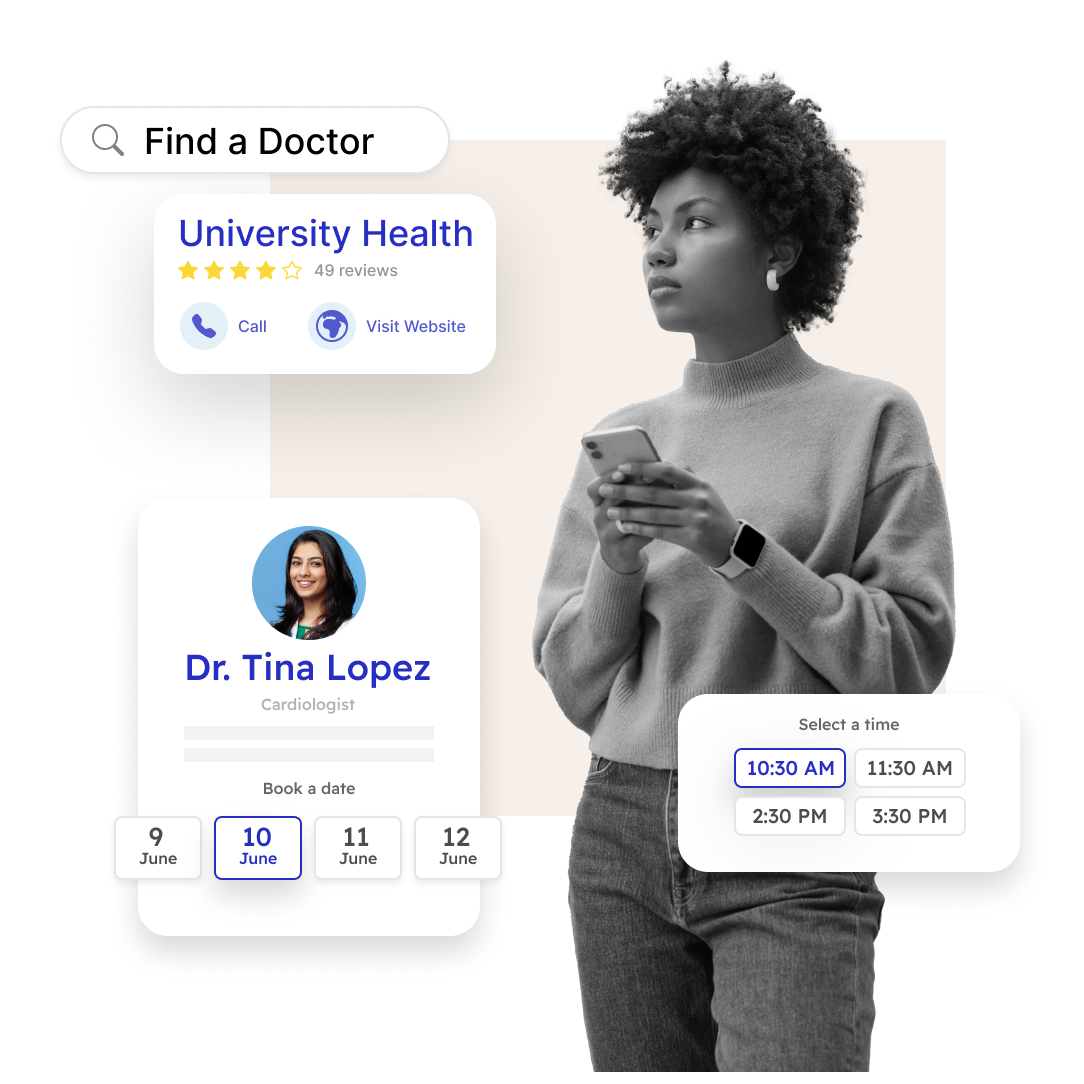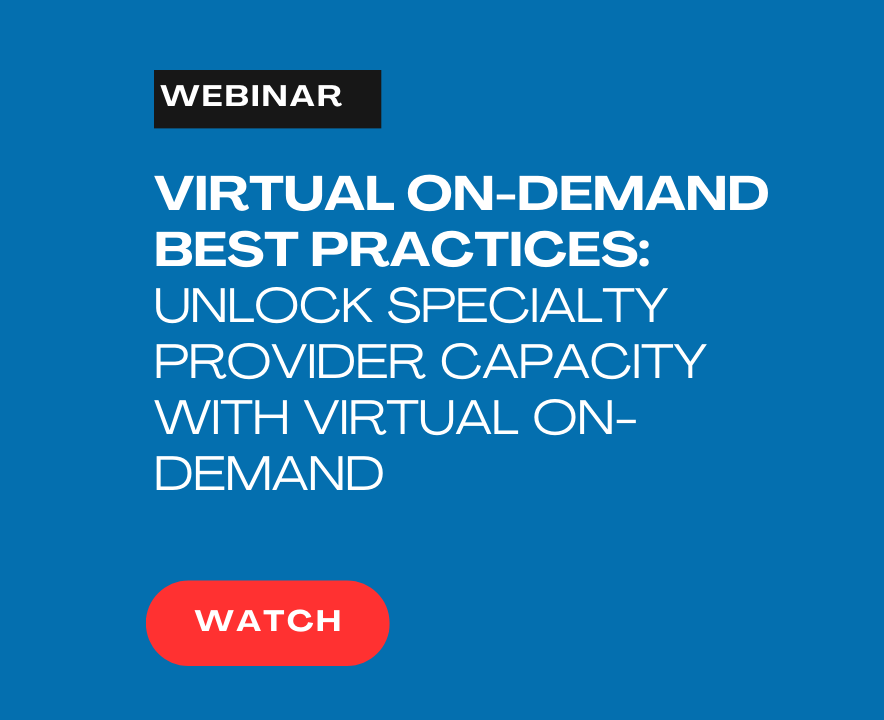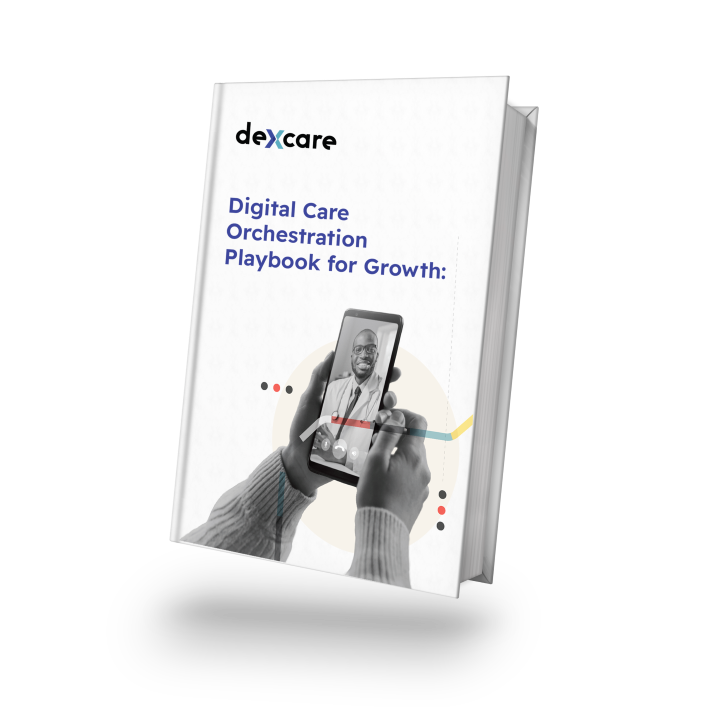Maximizing Health System Capacity: Strategies for COOs & CFOs

Sustainable growth remains a top to-do for all health system COOs and CFOs. But achieving it while balancing seemingly conflicting priorities keeps getting more difficult.
New competitors are chipping away at your market share, eroding your patient volumes. Patient wait times continue to grow. And an imbalance of supply and demand leaves some of your top specialists overwhelmed, while other providers seem to have significant capacity.
Digital care orchestration can help. To learn why, let’s first examine some of the top barriers to sustainable health system growth.
What’s inhibiting your health system’s growth plans?
1. Your patients can’t easily find your health system’s services online
If your website isn’t optimized for Google and mobile, it’s unlikely patients will find you. Why?
77% of online patient journeys start with a Google search.
Today, simply having a website isn’t enough. Your patients need a way to find your services — and book their appointments — directly on Google. In addition, many patients are using their mobile devices to find and book care, but most health systems’ digital experiences fall short of patient expectations. When it comes to mobile, speed matters. In fact, 47% of patients expect your site to load within 2 seconds.
If you’re not giving patients an easy, quick way to find the right care options from Google, you’re likely losing patients to your competitors.
2. You can’t balance supply and demand
When you can’t maximize your health system’s capacity, you can’t fix the root cause of your patient experience troubles. Patients today have to wait 26 days on average to see their primary care physician. For those seeking specialty care, the wait is even longer.
This happens when in-demand specialists become bogged down by appointments that could easily be handled by a primary care provider. It also occurs when primary care physicians see patients who could’ve been cared for by urgent care or through a virtual visit (potentially with a PA or NP).
When you achieve the right balance of supply and demand, you’ll get patients in to best-fit appointments sooner, and you’ll help your providers work at the top of their license.
3. Retail health giants are circling
The days when your only competition was the health system up the street are long gone. Now, retail giants like CVS and Amazon are swooping in and providing both in-person and virtual care services nationwide. And it’s making an impact.
Claim volumes from retail clinics grew 200% from 2017-2022.
While a part of their success is due to their enormous brand recognition, another factor is their streamlined, retail-inspired patient journey. Leading brands know how to attract and retain customers, and they’ve used all that expertise to build healthcare journeys that are extraordinarily easy to navigate for patients.
4. You can’t fully leverage your data
Your health system is likely swimming in a sea of data, much of which is historical. This provides only a partial view, making real-time adjustments challenging and exacerbating supply and demand issues. To drive sustainable growth, financial and operational leaders need more effective ways to forecast various evolving metrics, including workforce utilization, facility congestion, revenue projection, and seasonal demand fluctuations.
Digital care orchestration: The fast path to sustainable health system growth
Solving these growth challenges starts with digital care orchestration. It’s a modern approach to connecting patients, providers, and care options seamlessly across the entire health system so you can:
- Make your services easily discoverable
- Surface the best care options based on patient intent and capacity
- Offer the right care and information on your most popular website pages
- Use advanced data to optimize utilization and grow
To enact digital care orchestration, you not only need to change how you think about the patient journey. You also need to incorporate the right tools to take advantage of your data and deliver the best patient experience possible while balancing provider capacity and workloads.
Digital care orchestration in action
Digital care orchestration isn’t just a high-level concept. It’s a proven strategy that’s already helping COOs and CFOs of some of the largest health systems nationwide drive their growth plans forward.
Take, for example, Providence.
By partnering with DexCare and focusing on digital care orchestration, Providence was able to transform its ambulatory care model to deliver a better patient experience. By presenting a unified, digital experience, they were able to:
- Increase acquisition of net new patients by 30%
- Achieve an average net promoter score of 97
- Increase their net new patient return rate by 30% in a year
“Platforms like DexCare aggregate and match digital demand with health system capacity across all lines of care, streamline the experience for both patients and providers and maximize resources,” says Sara Vaezy, Chief Digital Officer. “At Providence, DexCare has enabled service lines to drive new customer acquisition into a single service, capture a much greater amount of downstream revenue, and generate a higher per-patient encounter in cost savings.”
Start your path toward sustainable growth
Don’t let capacity challenges, digital roadblocks, and competitive pressures stand in your way of achieving sustainable growth. Learn more about digital care orchestration and find out how DexCare can make it happen for your organization.
Start by reading this playbook for COOs and CFOs, where you’ll learn how DexCare can solve your growth challenges while helping you maximize your health system’s most valuable resources.






